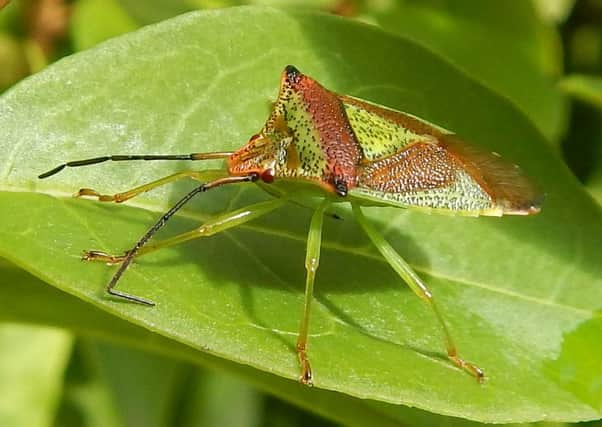A distinctive insect dazzling with its colours


In fact, for the Hawthorn Shield Bug they never went away. Acanthosoma haemorrhoidale, to give this handsome local insect its proper name, is our largest shield bug species; a distinctive insect, although easily confused with the smaller and less elongated Birch Shieldbug.
The Hawthorn Shield bug overwinters as an adult, emerging and mating in the spring. The larvae occur May-October, feeding mainly on hawthorn berries, although a range of other berries and trees are also used, including oak, hazel and birch. I found this one on wild privet.
Advertisement
Hide AdAdvertisement
Hide AdThe new generation is complete from August/September or even later. Adults may become darker before hibernation, though this one is fairly typical of normal autumn appearance.
The insect is common and widespread in mixed woodlands across Britain and Ireland, becoming somewhat scarcer in Scotland, but then, that applies to so many British species and not just insects.
Our climate, however much we try to ignore it, is much harsher than southern England, especially the winters. There are many species of shieldbug we do not find here, so three cheers for the Hawthorn Shield bug for being able to enliven a country walk by putting in an appearance and dazzling us with its colours and intricacy of pattern.
It would be well named the Origami Bug for the way its pattern seems to have been folded. If you have never seen a Hawthorn Shieldbug that may be due to its mastery of camouflage.
At a time when 60 per cent of all insect species are declining we need to do all we can to help. Find out how by visiting the website of Bug Life. Better still, join up.